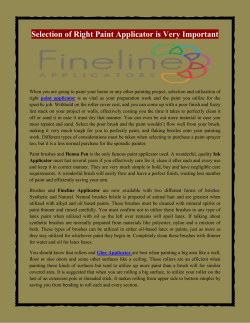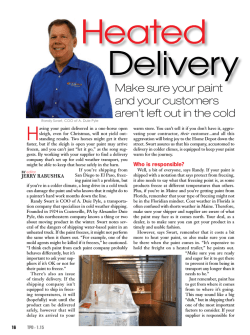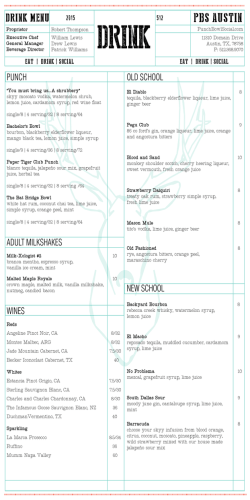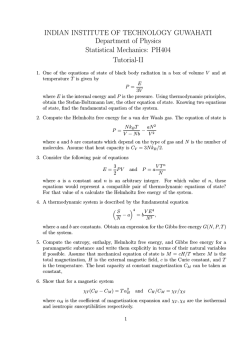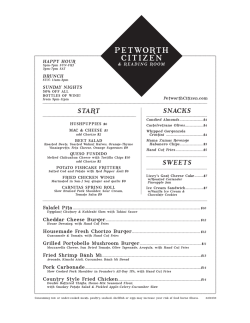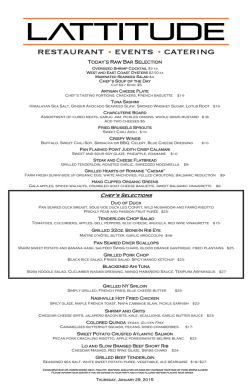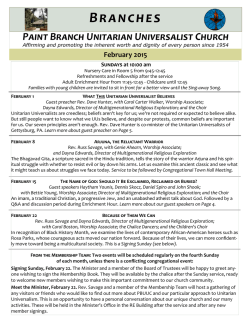
Algebra II Module 1, Topic C, Lesson 27: Teacher Version
Lesson 27 NYS COMMON CORE MATHEMATICS CURRICULUM M1 ALGEBRA II Lesson 27: Word Problems Leading to Rational Equations Student Outcomes Students solve word problems using models that involve rational expressions. Lesson Notes In the preceding lessons, students learned to add, subtract, multiply, and divide rational expressions and solve rational equations in order to develop the tools needed for solving application problems involving rational equations in this lesson (A-REI.A.2). Students will develop their problem-solving and modeling abilities by carefully reading the problem description and converting information into equations (MP.1), thus creating a mathematical model of the problem (MP.4). Classwork Exercise 1 (13 minutes) We now turn to some applied problems that we can model with rational equations, strengthening students’ problemsolving and modeling experience in alignment with standards MP.1 and MP.4. We can solve these equations using the skills developed in previous lessons. Have students work in small groups to answer this set of four questions. At the end of the work time, ask different groups to present their solutions to the class. Suggest to students that they should: (a) read the problem aloud, (b) paraphrase and summarize the problem in their own words, (c) find an equation that models the situation, and (d) say how it represents the quantities involved. Check to make sure that students understand the problem before they begin trying to solve it. You may want to encourage students, especially with this first problem, by suggesting that they use for the unknown quantity and asking if they can arrive at an equation that relates this unknown quantity to the known quantities. Exercise 1 1. Anne and Maria play tennis almost every weekend. So far, Anne has won matches. a. MP.1 & MP.4 out of How many matches will Anne have to win in a row to improve her winning percentage to ? Suppose that Anne has already won of matches, and let represent the number of additional matches she must win to raise her winning percentage to . After playing and winning all of those additional matches, she has won matches out of a total of matches played. Her winning percentage is then , and we want to find the value of Lesson 27: Date: that solves the equation Scaffolding: Students may benefit from having the problem read aloud and summarized. They should be encouraged to restate the problem in their own words to a partner. If students are struggling, present the equation and ask students how this models the situation. Students who may be above grade level could be challenged to write their own word problems that result in rational equations. Word Problems Leading to Rational Equations 7/22/146/11/14 © 2014 Common Core, Inc. Some rights reserved. commoncore.org This work is licensed under a Creative Commons Attribution-NonCommercial-ShareAlike 3.0 Unported License. 293 Lesson 27 NYS COMMON CORE MATHEMATICS CURRICULUM M1 ALGEBRA II Multiply both sides by . ( MP.1 & MP.4 Solving for : So, Anne would need to win b. ) matches in a row in order to improve her winning percentage to How many matches will Anne have to win in a row to improve her winning percentage to . ? This situation is similar to that for part (a), except that we want a winning percentage of , instead of . Again, we let represent the number of matches Anne must win consecutively to bring her winning percentage up to . Solving for : ( In order for Anne to bring her winning percentage up to matches. c. MP.2 Can Anne reach a winning percentage of ) , she would need to win the next ? Allow students to come to the conclusion that Anne will never reach a winning percentage of she has already lost matches. d. consecutive because After Anne has reached a winning percentage of by winning consecutive matches as in part (b), how many matches can she now lose in a row to have a winning percentage of ? Recall from part (b) that she had won matches out of to reach a winning percentage of . We will now assume that she loses the next matches in a row. Then, she will have won matches out of matches, and we want to know the value of that makes this a win rate. Solving the equation: ( Thus, after reaching a winning percentage in a winning percentage. Lesson 27: Date: ) matches, Anne can lose matches in a row to drop to Word Problems Leading to Rational Equations 7/22/146/11/14 © 2014 Common Core, Inc. Some rights reserved. commoncore.org This work is licensed under a Creative Commons Attribution-NonCommercial-ShareAlike 3.0 Unported License. 294 Lesson 27 NYS COMMON CORE MATHEMATICS CURRICULUM M1 ALGEBRA II Example 1 (5 minutes) Work this problem at the front of the room, but allow the class to provide input and steer the discussion. Depending on how students did with the first exercise, the teacher may lead a discussion of this problem as a class, ask students to work in groups, or ask students to work independently while targeting instruction with a small group that struggled on the first example. Example 1 Working together, it takes Sam, Jenna, and Francisco two hours to paint one room. When Sam is working alone, he can paint one room in hours. When Jenna works alone, she can paint one room in hours. Determine how long it would take Francisco to paint one room on his own. Consider how much can be accomplished in one hour. Sam, Jenna, and Francisco together can paint half a room in one hour. If Sam can paint one room in hours on his own, then in one hour he can paint of the room. Similarly, Jenna can paint of the room in one hour. We do not yet know how much Francisco can paint in one hour, so we will say he can paint of the room. So, in one hour, Sam has painted of the room, Jenna has painted of the room, and all three MP.4 together can paint the room, leading to the following equation for how much can be painted in one hour: A common multiple of the denominators is . Multiplying both sides by gives us: which leads us to the value of : So, Francisco can paint the room in hours on his own. Exercise 2 (5 minutes) Remind students that distance equals rate times time ( ) before having them work on this exercise in pairs or small groups. Be sure to have groups share their results before continuing to the next exercise. Lesson 27: Date: Word Problems Leading to Rational Equations 7/22/146/11/14 © 2014 Common Core, Inc. Some rights reserved. commoncore.org This work is licensed under a Creative Commons Attribution-NonCommercial-ShareAlike 3.0 Unported License. 295 Lesson 27 NYS COMMON CORE MATHEMATICS CURRICULUM M1 ALGEBRA II Exercises 2–4 2. Melissa walks miles to the house of a friend and returns home on a bike. She averages miles per hour faster when cycling than when walking, and the total time for both trips is two hours. Find her walking speed. Using the relationship , we have the time to cycle back is MP.1 & MP.4 . The time it takes for Melissa to walk to her friend’s house is , and . Thus, we can write an equation that describes the combined time for both trips: A common multiple of the denominators is ( ), so we multiply both sides of the equation by ( ( Thus, or solution is ) ( )( ( ). ) ) . Since represents Melissa’s speed it does not make sense for which means that Melissa’s walking speed is to be negative. So, the only miles per hour. Exercise 3 (10 minutes) 3. You have a. liters of a juice blend that is juice. How many liters of pure juice need to be added in order to make a blend that is juice? ( ) We start off with liters of a blend containing juice. Then, this blend contains liters of juice in the liters of mixture. If we add liters of pure juice, then the concentration of juice in the blend is . We want to know which value of makes this blend juice. ( Thus, if we add liters of pure juice, we have the concentration of juice in this blend is . b. ) liters of a blend that contains liters of juice, meaning that How many liters of pure juice need to be added in order to make a blend that is ( ) Thus, if we add liters of pure juice, we will have liters of a blend that contains meaning that the concentration of juice in this blend is . Lesson 27: Date: juice? liters of pure juice, Word Problems Leading to Rational Equations 7/22/146/11/14 © 2014 Common Core, Inc. Some rights reserved. commoncore.org This work is licensed under a Creative Commons Attribution-NonCommercial-ShareAlike 3.0 Unported License. 296 Lesson 27 NYS COMMON CORE MATHEMATICS CURRICULUM M1 ALGEBRA II c. Write a rational equation that relates the desired percentage be added to make a blend that is juice, where of possible values of ? Explain your answer. to the amount of pure juice that needs to . What is a reasonable restriction on the set MP.4 We need to have for the problem to make sense. We already have juice; the percentage cannot decrease by adding more juice, and we can never have a mixture that is more than percent juice. d. Suppose that you have added blend? So, the new blend contains e. liters of juice to the original liters. What is the percentage of juice in this pure juice. Solve your equation in part (c) for the amount . Are there any excluded values of the variable ? Does this make sense in the context of the problem? ( ) ( ) MP.2 ( ) We see from the equation for that . This makes sense because we can never make a solution since we started with a diluted amount of juice. juice Exercise 4 (5 minutes) Allow students to work together in pairs or small groups for this exercise. This exercise is a bit different from the previous example in that the amount of acid comes from a diluted solution, not a pure solution. Be sure that students get the numerator set up correctly. (If there is not enough time to do the entire problem, have students set up the equations in class and finish solving them for homework.) 4. You have a solution containing a. How much of the acid? If we add acid and a solution containing solution must you add to acid. liter of the solution to create a mixture that is liters of the solution, then the new mixture is liters of solution that contains liters of acid. We want the final mixture to be acid, so we need to solve the equation: Solving this gives ( Thus, if we add acid solution. Lesson 27: Date: liters of acid solution to liter of ) acid solution, the result is liters of Word Problems Leading to Rational Equations 7/22/146/11/14 © 2014 Common Core, Inc. Some rights reserved. commoncore.org This work is licensed under a Creative Commons Attribution-NonCommercial-ShareAlike 3.0 Unported License. 297 Lesson 27 NYS COMMON CORE MATHEMATICS CURRICULUM M1 ALGEBRA II b. Write a rational equation that relates the desired percentage to the amount of acid solution that needs to be added to liter of acid solution to make a blend that is acid, where . What is a reasonable restriction on the set of possible values of ? Explain your answer. MP.4 We must have because if we blend a contain an acid percentage between and . c. acid solution and a acid solution, the blend will Solve your equation in part (b) for . Are there any excluded values of ? Does this make sense in the context of the problem? MP.2 We need to exclude from the possible range of values of , which makes sense in context because we can never reach a acid solution since we started with a solution that was acid. d. If you have added some acid solution to much of the stronger acid did you add? The formula in part (c) gives liter of acid solution to make a liter of ; therefore, acid solution to make a . We added liters of the acid solution, how acid solution to the acid mixture. Closing (2 minutes) Ask students to summarize the important parts of the lesson in writing, to a partner, or as a class. Use this as an opportunity to informally assess understanding of the lesson. Lesson Summary In this lesson, we developed the students’ problem solving skills by asking them to carefully read a problem, rephrase it in a form comfortable for their own understanding, and convert fact sentences about unknown quantities into algebraic equations. Specifically, they used rational equations to model and solve some application problems and further developed their skills in working with rational expressions. Exit Ticket (5 minutes) Lesson 27: Date: Word Problems Leading to Rational Equations 7/22/146/11/14 © 2014 Common Core, Inc. Some rights reserved. commoncore.org This work is licensed under a Creative Commons Attribution-NonCommercial-ShareAlike 3.0 Unported License. 298 Lesson 27 NYS COMMON CORE MATHEMATICS CURRICULUM M1 ALGEBRA II Name Date Lesson 27: Word Problems Leading to Rational Equations Exit Ticket Bob can paint a fence in hours, and working with Jen, the two of them painted the fence in have taken Jen to paint the fence alone? Lesson 27: Date: hours. How long would it Word Problems Leading to Rational Equations 7/22/146/11/14 © 2014 Common Core, Inc. Some rights reserved. commoncore.org This work is licensed under a Creative Commons Attribution-NonCommercial-ShareAlike 3.0 Unported License. 299 Lesson 27 NYS COMMON CORE MATHEMATICS CURRICULUM M1 ALGEBRA II Exit Ticket Sample Solutions Bob can paint a fence in hours, and working with Jen, the two of them painted the fence in have taken Jen to paint the fence alone? Let hours. How long would it represent the time it would take Jen to paint the fence alone. Then, Bob can paint the entire fence in hours; therefore, in one hour he can paint of the fence. Similarly, Jen can paint of the fence in one hour. We know that it took them two hours to complete the job, and together they can paint of the fence in one hour. We then have to solve the equation: Thus, it would have taken Jen hours and minutes to paint the fence alone. Problem Set Sample Solutions 1. If inlet pipes can fill a pool in one hour and minutes, and one pipe can fill the pool in two hours and on its own, how long would the other pipe take to fill the pool on its own? We find that 2. minutes for the second pipe to fill the pool by itself. If one inlet pipe can fill the pool in hours with the outlet drain closed, and the same inlet pipe can fill the pool in hours with the drain open, how long does it take the drain to empty the pool if there is no water entering the pool? We find that 3. ; therefore, it takes hours and minutes ; therefore, it takes hours for the drain to empty the pool by itself. It takes minutes less time to travel miles by car at night than by day because the lack of traffic allows the average speed at night to be miles per hour faster than in the daytime. Find the average speed in the daytime. We find that minutes, which is hours; therefore, the average speed in the daytime is miles per hour. Lesson 27: Date: Word Problems Leading to Rational Equations 7/22/146/11/14 © 2014 Common Core, Inc. Some rights reserved. commoncore.org This work is licensed under a Creative Commons Attribution-NonCommercial-ShareAlike 3.0 Unported License. 300 Lesson 27 NYS COMMON CORE MATHEMATICS CURRICULUM M1 ALGEBRA II 4. The difference in the average speed of two trains is travel miles than the faster train takes to travel We find that 5. hours. The average speed of the slower train is , so the school subscribed to shares or Newton’s law of universal gravitation, Suppose that a. , measures the force of gravity between two masses and 9. For which values of is , then ; therefore, the value of does not depend on the value of . do these relationships have no meaning? has no meaning. If Consider the rational equation a. Find the value of when , then has no meaning. . and . ⁄ So , , the value of does not depend on the value of . When simplified, we find that If and is the universal gravitational constant. Solve this . Show that when b. per share, the investor shares where is the distance between the centers of the masses, and equation for . 8. magazines in December. An investor bought a number of shares of stock for . After the price dropped by sold all but of her shares for . How many shares did she originally buy? Two possible answers: 7. miles per hour. A school library spends a month on magazines. The average price for magazines bought in January was cents more than the average price in December. Because of the price increase, the school library was forced to subscribe to fewer magazines. How many magazines did the school library subscribe to in December? The average price in December is 6. miles per hour. The slower train takes hours longer to miles. Find the speed of the slower train. ⁄ . Lesson 27: Date: Word Problems Leading to Rational Equations 7/22/146/11/14 © 2014 Common Core, Inc. Some rights reserved. commoncore.org This work is licensed under a Creative Commons Attribution-NonCommercial-ShareAlike 3.0 Unported License. 301 Lesson 27 NYS COMMON CORE MATHEMATICS CURRICULUM M1 ALGEBRA II b. Solve this equation for and simplify. There are two approaches to solve this equation for . The first way is to perform the addition on the right: The second way is to take reciprocals of both sides, and then simplify: ⁄ ⁄ ⁄ ( In either case, we find that ⁄ )⁄ . 10. Consider an ecosystem of rabbits in a park that starts with that roughly models this scenario is rabbits and can sustain up to rabbits. An equation , where a. represents the rabbit population in year of the study. What is the rabbit population in year If b. , then ? Round your answer to the nearest whole rabbit. ; therefore, there are rabbits in the park. Solve this equation for . Describe what this equation represents in the context of this problem. This equation represents the relationship between the number of rabbits, , and the year, . If we know how many rabbits we have, , we will know how long it took for the rabbit population to grow that much. If the population is , then this equation says we are in year of the study, which fits with the given scenario. c. At what time does the population reach 50 rabbits? If , then ; therefore, the rabbit population is in year of the study. Extension: 11. Suppose that Huck Finn can paint a fence in hours. If Tom Sawyer helps him paint the fence, they can do it in hours. How long would it take for Tom to paint the fence by himself? Huck paints the fence in hours, so his rate of fence painting is fence per hour. Let denote the percentage of the fence Tom can paint in an hour. Then fence ( So, Tom can paint Lesson 27: Date: (( ) fence per hour) ( hours). ) of the fence in an hour. Thus, Tom would take hours to paint the fence by himself. Word Problems Leading to Rational Equations 7/22/146/11/14 © 2014 Common Core, Inc. Some rights reserved. commoncore.org This work is licensed under a Creative Commons Attribution-NonCommercial-ShareAlike 3.0 Unported License. 302 Lesson 27 NYS COMMON CORE MATHEMATICS CURRICULUM M1 ALGEBRA II 12. Huck Finn can paint a fence in a. hours. After some practice, Tom Sawyer can now paint the fence in hours. How long would it take Huck and Tom to paint the fence together? The amount of fence that Huck can paint per hour is , and the amount that Tom can paint per hour is . So, together they can paint of the fence per hour. Suppose the entire job of painting the fence takes hours. Then, the amount of the fence that is painted is to solve the equation ( ) ). Since the entire fence is painted, we need . ( So, together they can paint the fence in b. ( ) hours, which is hours and minutes. Tom demands a half hour break while Huck continues to paint, and they finish the job together. How long does it take them to paint the fence? Suppose the entire job of painting the fence takes hour for hours, so he paints so he paints ( hours. Then, Huck paints at a rate of of the fence. Tom paints at a rate of ) of the fence. of the fence per of the fence per hour for hours, Together, they paint the whole fence; so, we need to solve the following equation for : ( ) ( Thus, it takes c. hours, which is hours ) minutes, to paint the fence with Tom taking a Suppose that they have to finish the fence in hours What’s the longest break that Tom can take? Suppose the entire job of painting the fence takes hours, and Tom stops painting for Then, Huck paints at a rate of of the fence per hour for hours, so he paints a rate of of the fence per hour for ( hour break. ( ) hours, so he paints hours for his break. of the fence. Tom paints at ) of the fence. Together, they paint the whole fence; so, we need to solve the following equation for : ( ( Thus, if Tom takes a break for Lesson 27: Date: hours, which is ) ) hour and minutes, the fence will be painted in hours. Word Problems Leading to Rational Equations 7/22/146/11/14 © 2014 Common Core, Inc. Some rights reserved. commoncore.org This work is licensed under a Creative Commons Attribution-NonCommercial-ShareAlike 3.0 Unported License. 303
© Copyright 2025
